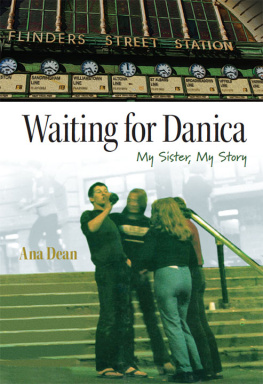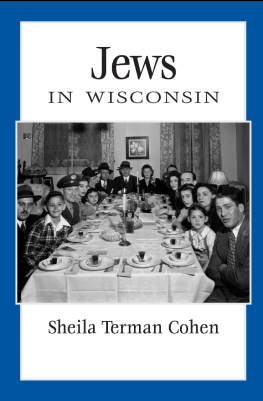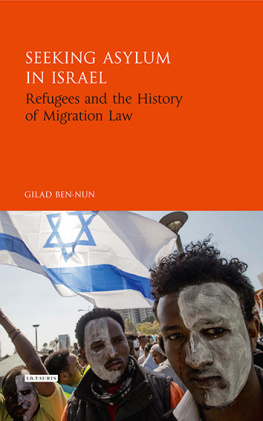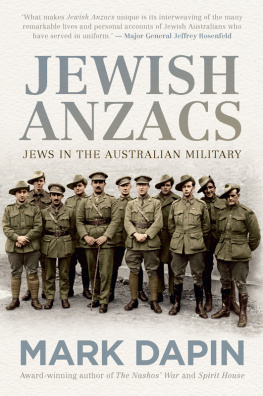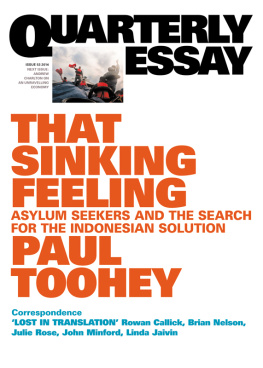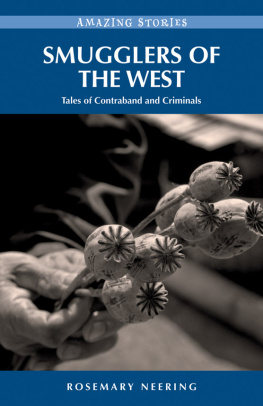Table of Contents
Page List
Guide

SMUGGLED
R UTH B ALINT is an associate professor of history at the University of New South Wales. She teaches and writes about forced migration, family and refugees in the twentieth century. Her family were refugees from Europe before and after the Second World War. Her latest book, Destination Elsewhere: Displaced Persons and their Quest to Leave Europe after 1945, is published by Cornell University Press.
J ULIE K ALMAN is an associate professor of history at Monash University. She writes about the history of French Jews, after the French Revolution and also following the Second World War. She is the child of migrants from Europe, and she has researched and published on topics related to her own history, including the history of migration to Australia, and the Eurovision Song Contest.
Smuggled is a pioneering work in Australian immigration history. The history of illegal journeys is a topic rarely discussed let alone researched in any depth. The powerful stories recounted in this compelling book about people smuggling write a new chapter in the history of displacement through the extraordinary experiences of courage, survival, and resilience. It is inspiring research which transforms our understanding of the history of migration to Australia through an evocative new lens.
PROFESSOR JOY DAMOUSI, AUSTRALIAN CATHOLIC UNIVERSITY
Smuggled is an enthralling book. Each chapter is a short story of a separate and unique journey to safety; dangerous, desperate and daring. Each story adds to our understanding of a smuggler as a person who is often so much more than an unscrupulous criminal. They are frequently skilled facilitators, brave guides and caring escorts. They range from diplomats to simple villagers. It may suit some politicians to colour smugglers as money hungry crooks, but without their help, the refugees in this book, and most refugees in general, would never have made it to Australia to build worthwhile lives. Smuggled is a new, important way to tell our migration history, and is a fascinating read.
ANDREW AND RENATA KALDOR, KALDOR CENTRE FOR INTERNATIONAL REFUGEE LAW, UNIVERSITY OF NEW SOUTH WALES
A combination of engaging stories and astute analysis, Smuggled is a timely corrective to the simplistic portrayal of people smugglers as evil scum. Some smugglers may be heroes and some may be villains, but to blame them for the suffering of refugees is to deflect from more important concerns, including the oppression that drives people from their homes and the border controls that force them onto dangerous routes.
PETER MARES, THE CRANLANA CENTRE FOR ETHICAL LEADERSHIP
A NewSouth book
Published by
NewSouth Publishing
University of New South Wales Press Ltd
University of New South Wales
Sydney NSW 2052
AUSTRALIA
newsouthpublishing.com
Ruth Balint and Julie Kalman 2021
First published 2021
This book is copyright. Apart from any fair dealing for the purpose of private study, research, criticism or review, as permitted under the Copyright Act, no part of this book may be reproduced by any process without written permission. Inquiries should be addressed to the publisher.
 | A catalogue record for this
book is available from the
National Library of Australia |
ISBN:9781742236896 (paperback)
9781742245140 (ebook)
9781742249667 (ePDF)
Design Josephine Pajor-Markus
Cover design Susanne Geppert
Cover artwork The little fish was the riverboat (From the Horses Mouth), 2019 Phuong Ngo
All reasonable efforts were taken to obtain permission to use copyright material reproduced in this book, but in some cases copyright could not be traced. The authors welcome information in this regard.

CONTENTS
Migration History
Julie Kalman
Ruth Balint
Julie Kalman
with Julie Kalman
with Nathalie Huynh Chau Nguyen
with Ruth Balint
Ngo Minh Hoang with Phuong Ngo
with Julie Kalman
with Ruth Balint
with Julie Kalman
with Ruth Balint
with Julie Kalman
Omid Tofighian
Ruth Balint and Julie Kalman
In the past two decades, the worlds media has been awash with images of sinking boats crammed with desperate people, bodies washed up on beaches or dead in the backs of lorries, and of children behind barbed wire. Nowadays, the refugee has become synonymous with both illegality and victimhood in the public imagination, closely associated with irregular border crossings and crooks, even as they are simultaneously imagined as victims. It is within this recent context that the term people smuggler has emerged to encapsulate the criminality of refugee flight. It evokes a clandestine world of unscrupulous individuals connected to mafia networks, preying on vulnerable people and undermining proper, orderly and humanitarian migration processes. We might argue that the evil people smuggler has become the bogeyman of the Western world, rivalled only by terrorists and paedophiles, and demonising people smugglers is something of a sport among politicians. People smugglers are engaged in the worlds most evil trade and they should all rot in jail because they represent the absolute scum of the earth, thundered Prime Minister Kevin Rudd in 2009, in just one notable example.
But people smuggling is not as new a phenomenon as might be suggested by the language of crisis usually employed by our politicians and the media. The practice is far older and more complex than discussions of organised crime might suggest. For as long as states, kingdoms and empires have sought ways to manage the movement of people, people have sought ways to circumvent borders and bypass travel restrictions, and smugglers have been there to help. Mario Kaiser suggests we could go as far back as Moses leading thousands of Jewish slaves out of Egypt, to find the first people smuggler. Instead, a whole underground industry in illegal Jewish immigration, assisted by a vast network of international smugglers in ports and cities across Eastern Europe, Asia and the Americas, functioned to assist Jews escaping worsening economic conditions, political upheaval and anti-Semitic violence in Eastern Europe, Russia and then the Soviet Union.
In Smuggled: An illegal history of journeys to Australia we tell the fascinating story of people smuggling in Australias migrant history, from the Second World War through to the present. This is a new way of telling Australias immigration history. We show that many who belonged to migrant groups classified by the government of the day as undesirable and unwanted have been helped or smuggled, at some point in their journey, through gates that were officially closed. These stories have not yet made it into the classical narratives of migration, partly because we havent tended to see illegality as part of this history. Ironically, perhaps, given that immigration nowadays is mostly defined in criminal and warlike terms, in need of closer monitoring, tracking, regulation and securitisation on an entirely new scale.
The official appearance of the people smuggler in Australia dates to the boat crossings that began with small numbers in the late 1990s, and peaked in the early 2000s, reviving historic fears of invasion from our near maritime north. Fear of invasion is a recurring Australian theme. At the beginning of the twentieth century such fears were embodied in the term yellow peril. Settler Australians imagined themselves to be in danger of being swamped by uncontrollable numbers of Asian hordes to our north. At the beginning of the twenty-first century, it was common to read hyperbolic oceanic headlines of the tides, floods, tsunamis and tidal waves of refugees, bearing down on Australias fragile coastline. These accompanied images of rotting ferries capsizing under the strain of dangerously heavy loads of exhausted passengers sailing across the Timor Sea between Indonesia and Australia. Stopping the boats quickly became the war cry of successive governments, particularly in the wake of the Tampa Affair of 2001, in which one of the biggest container ships in the world became the unlikely carrier for 433 asylum seekers saved from their sinking wooden boat, the



